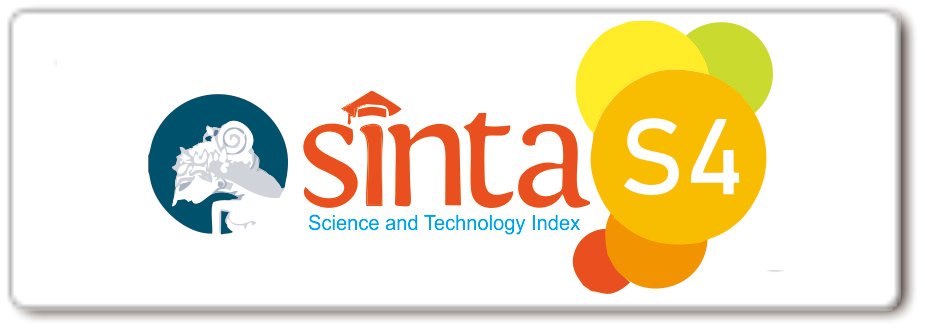TATA LAKSANA TERKINI PENYAKIT SINDROM STEVENS-JOHNSON (SSJ)/ NEKROLISIS EPIDERMAL TOKSIK (NET)
DOI:
https://doi.org/10.33820/mdvi.v50i1.291Keywords:
Sindrom Steven-Johnson, nekrolisis epidermal toksik, tata laksanaAbstract
Sindrom Stevens-Johnson (SSJ) dan nekrolisis epidermal toksik (NET) merupakan penyakit yang mengancam nyawa, ditandai oleh adanya ruam dan lepuh yang nyeri, disertai lepasnya lapisan epidermis, atau ulkus pada mukosa mulut, mata, dan genital. SSJ/NET merupakan spektrum terberat dari reaksi efek simpang obat yang dimediasi imun, terutama oleh sel T, dan termasuk reaksi hipersensitivitas tipe IVc. SSJ dan NET adalah penyakit yang sama, dibedakan berdasarkan persentase permukaan kulit yang terlibat yaitu SSJ (<10%), SSJ/NET overlap (10%-30%), dan NET (>30%). SSJ/NET sering disertai keterlibatan multiorgan dengan rerata mortalitas 1-5% pada SSJ dan 25-35% pada NET. Tata laksana optimal SSJ/NET meliputi diagnosis dini, identifikasi dan penghentian obat tersangka, mempertimbangkan kemungkinan adanya infeksi sebagai pencetus, serta terapi suportif sedini mungkin. Terapi suportif yang dilakukan oleh tim multidisipilin merupakan tata laksana utama. Terapi suportif yang baik terbukti dapat memperbaiki kondisi klinis pasien. Rekomendasi penggunaan terapi sistemik berupa kortikosteroid, siklosporin, intravenous immunoglobulin (IVIg), plasmaferesis, dan terapi target, hingga saat ini sangat bervariasi karena belum terdapat bukti efikasi berdasarkan penelitian randomized controlled trial.
Downloads
References
1. Mockenhaupt M, Roujeau J-C. Epidermal necrolysis (stevens-Johnson syndrome and toxic epidermal necrolysis). In: Kang S, Amagai M, Bruckner A, Enk A, Margolis D, McMichael A et al, ed. Fitzpatrick’s Dermatology 9th Edition. New York: McGraw-Hill; 2019:732-748.
2. Hafner A, Sprecher E. Ulcers. In: Bolognia JL, Schaffer J V, Lorenzo C, eds. Fourth Edition Dermatology. USA: Elsevier Ltd; 2018:1841-1846.
3. Mahri S, Nuary T, Mughni FA, B. WK. A four years retrospective study of stevens johnson syndrome: toxic epidermal necrolysis treatments in a national tertiary referral hospital. Scitepress. 2021;(Rcd 2018):83-87.
4. Hasegawa A, Abe R. Recent advances in managing and understanding stevens-johnson syndrome and toxic epidermal necrolysis. F1000Research. 2020;9:1-12.
5. Dao R-L, Su S-C, Chung W-H. Recent advances of pharmacogenomics in severe cutaneous adverse reactions: immune and nonimmune mechanisms. Asia Pac Allergy. 2015;5:59.
6. Mockenhaupt M, Viboud C, Dunant A, et al. Stevens-Johnson syndrome and toxic epidermal necrolysis: Assessment of medication risks with emphasis on recently marketed drugs. The EuroSCAR-study. J Invest Dermatol. 2008;128:35-44.
7. Harris V, Jackson C, Cooper A. Review of toxic epidermal necrolysis. Int J Mol Sci. 2016;17:1-11.
8. Lerch M, Mainetti C, Terziroli Beretta-Piccoli B, Harr T. Current perspectives on stevens-johnson syndrome and toxic epidermal necrolysis. Clin Rev Allergy Immunol. 2018;54:147-176.
9. Abe R. Immunological response in stevens-johnson syndrome and toxic epidermal necrolysis. J Dermatol. 2015;42:42-48.
10. Creamer D, Walsh SA, Dziewulski P, et al. U.K. guidelines for the management of stevens–johnson syndrome/toxic epidermal necrolysis in adults 2016. Br J Dermatol. 2016;174:1194-1227.
11. Gupta L, Martin A, Agarwal N, et al. Guidelines for the management of stevens-johnson syndrome/toxic epidermal necrolysis: an indian perspective. Indian J Dermatol Venereol Leprol. 2016;82:603-625.
12. Bastuji-Garin S, Fouchard N, Bertocchi M, Roujeau JC, Revuz J, Wolkenstein P. Scorten: a severity-of-illness score for toxic epidermal necrolysis. J Invest Dermatol. 2000;115:149-153.
13. Shanbhag SS, Chodosh J, Fathy C, Goverman J, Mitchell C, Saeed HN. Multidisciplinary care in Stevens-Johnson syndrome. Ther Adv Chronic Dis. 2020;11:1-17.
14. Diao M, Thapa C, Ran X, Ran Y, Lv X. A retrospective analysis of infections and antibiotic treatment in patients with stevens–johnson syndrome and toxic epidermal necrolysis. J Dermatolog Treat. 2020;31:61-65.
15. Kinoshita Y, Saeki H. A review of toxic epidermal necrolysis management in Japan. Allergol Int. 2017;66:36-41.
16. Law EH, Leung M. Corticosteroids in stevens-johnson syndrome/toxic epidermal necrolysis: current evidence and implications for future research. Ann Pharmacother. 2015;49:335-342.
17. Zimmermann S, Sekula P, Venhoff M, et al. Systemic immunomodulating therapies for Stevens-Johnson syndrome and toxic epidermal necrolysis: A systematic review and meta-analysis. JAMA Dermatology. 2017;153:514-522.
18. Del Pozzo-Magana BR, Lazo-Langner A, Carleton B, Castro-Pastrana L. A systematic review of treatment of drug-induced Stevens-Johnson syndrome and toxic epidermal necrolysis in children. J Popul Ther Clin Pharmacol. 2011;18:e121–33.
19. Chatproedprai S, Wutticharoenwong V, Tempark T, Wananukul S. Clinical Features and Treatment Outcomes among Children with Stevens-Johnson Syndrome and Toxic Epidermal Necrolysis: A 20-Year Study in a Tertiary Referral Hospital. Dermatol Res Pract. 2018:1-9.
20. Ye LP, Zhang C, Zhu QX. The effect of intravenous immunoglobulin combined with corticosteroid on the progression of stevens-Johnson syndrome and toxic epidermal necrolysis: a meta-analysis. PLoS One. 2016;11:1-17.
21. Tsai TY, Huang IH, Chao YC, et al. Treating toxic epidermal necrolysis with systemic immunomodulating therapies: a systematic review and network meta-analysis. J Am Acad Dermatol. 2021;84:390-397.
22. Lee HY, Fook-Chong S, Koh HY, Thirumoorthy T, Pang SM. Cyclosporine treatment for Stevens-Johnson syndrome/toxic epidermal necrolysis: Retrospective analysis of a cohort treated in a specialized referral center. J Am Acad Dermatol. 2017;76:106-113.
23. Ng QX, Lee M, Qing Z. A meta-analysis of cyclosporine treatment for stevens – johnson syndrome / toxic epidermal necrolysis. J Inflamm Res. 2018;11:135-142.
24. Mohanty S, Das A, Ghosh A, et al. Effectiveness, safety and tolerability of cyclosporine versus supportive treatment in Stevens-Johnson Syndrome/Toxic Epidermal Necrolysis: A record-based study. Indian J Dermatol Venereol Leprol. 2017;83:312-316.
25. Daga Ruiz D, Fonseca San Miguel F, González de Molina FJ, Úbeda-Iglesias A, Navas Pérez A, Jannone Forés R. Plasmapheresis and other extracorporeal filtration techniques in critical patients. Med Intensiva (English Ed. 2017;41:174-187.
26. Schneider JA, Cohen PR. Stevens-Johnson Syndrome and Toxic Epidermal Necrolysis: A Concise Review with a Comprehensive Summary of Therapeutic Interventions Emphasizing Supportive Measures. Adv Ther. 2017;34:1235-1244.
27. Irfan M, Azfar NA, Malik LM, Rashid T. Plasmapheresis: an effective treatment in patients of toxic epidermal necrolysis: case report of two patients. J Pakistan Assoc Dermatologists. 2017;27:173-176.
28. Giudice G, Maggio G, Bufano L, Memeo G, Vestita M. Management of toxic epidermal necrolysis with plasmapheresis and cyclosporine a: our 10 years’ experience. Plast Reconstr Surg - Glob Open. 2017;5:1-7.
29. Paradisi A, Abeni D, Bergamo F, Ricci F, Didona D, Didona B. Etanercept therapy for toxic epidermal necrolysis. J Am Acad Dermatol. 2014;71:278-283.
30. Wang CW, Yang LY, Chen CB, et al. Randomized, controlled trial of TNF-α antagonist in CTL-mediated severe cutaneous adverse reactions. J Clin Invest. 2018;128:985-996.














